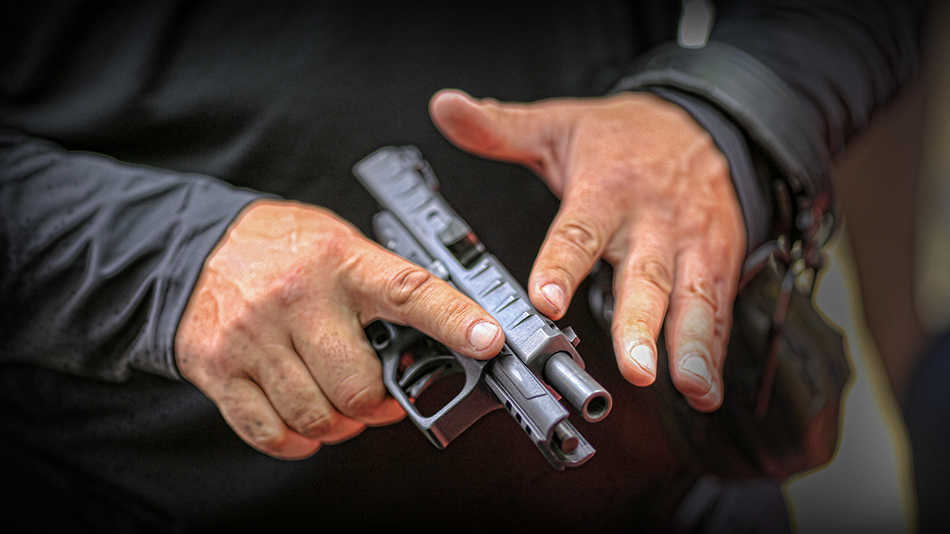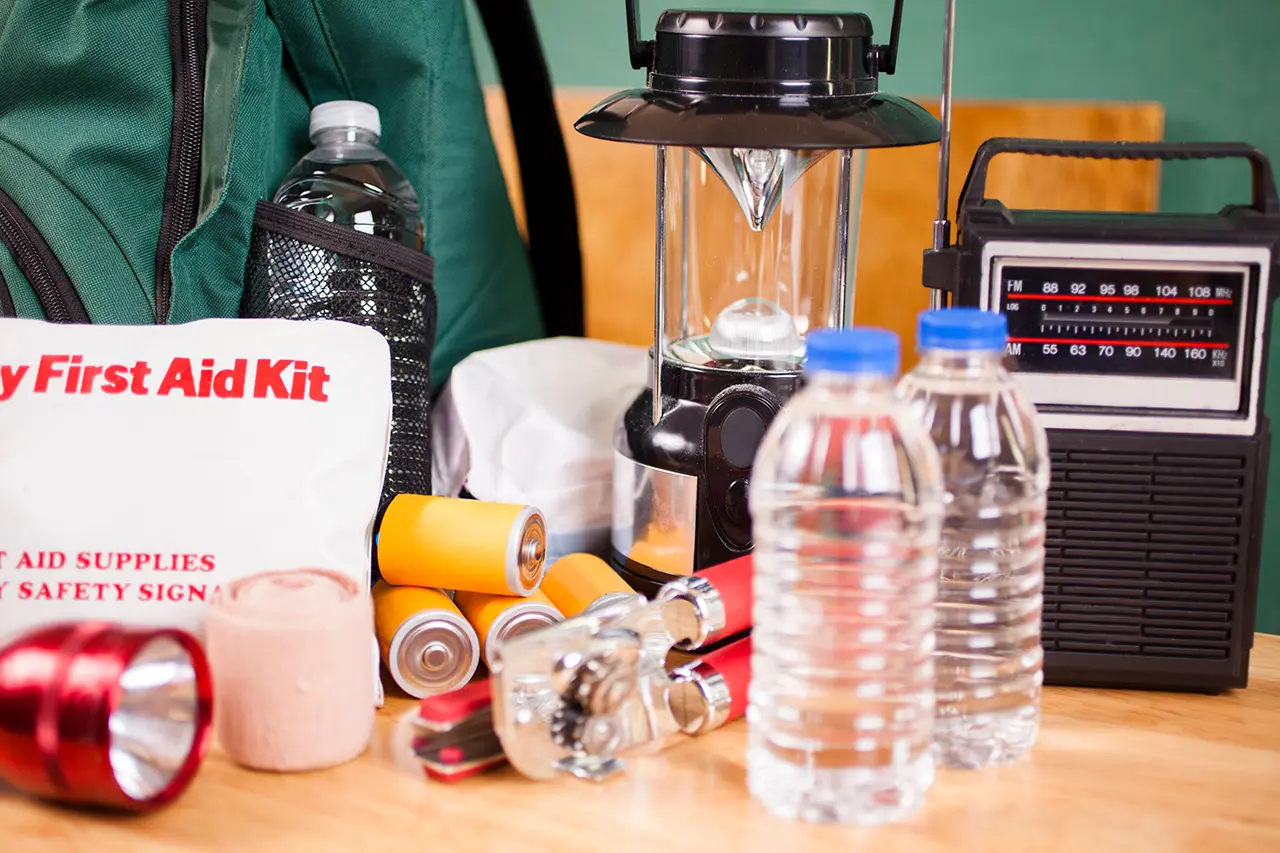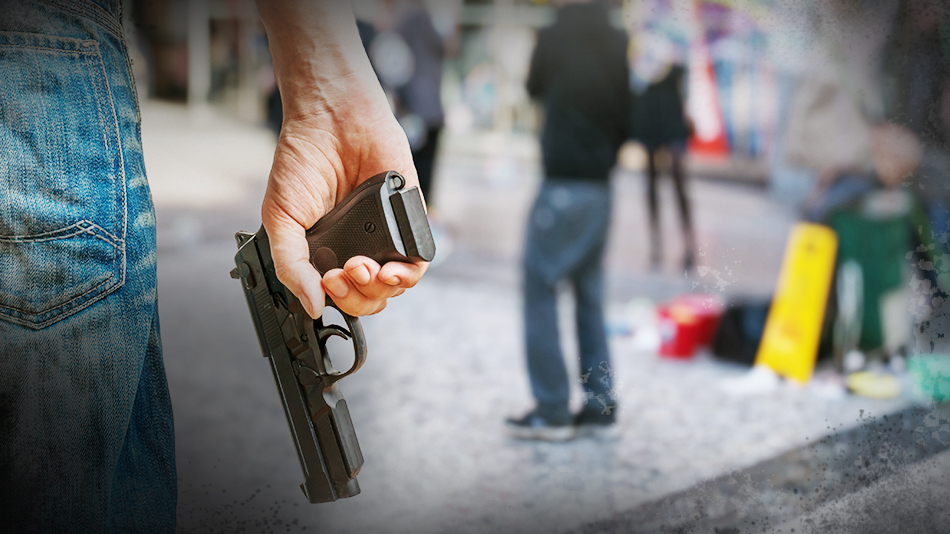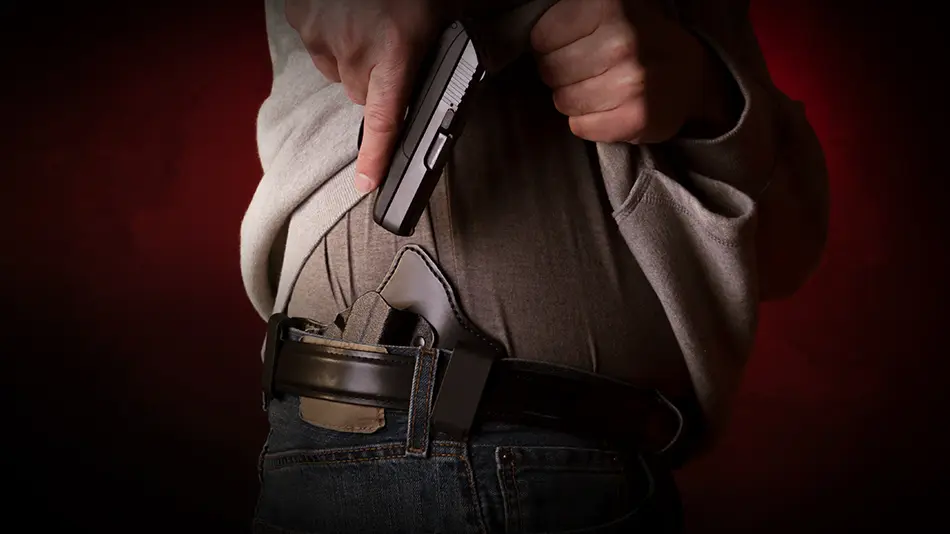
As a firearms owner, gun safety should be your top priority at all times. It does not matter if you own your gun for home defense, use it as an everyday carry (EDC), or only use it to hunt. Being safe is the responsibility of every gun owner. Sometimes it seems overwhelming, especially for those new to the gun world, because certain organizations push three rules while others say there are seven or more. We’re going to fill you in on four golden rules and offer some extra safety tips to further your firearms education.
What Are the 4 Rules of Gun Safety?
Although there is no magic number, there are basic gun safety rules that are widely respected, and important to know. They are as follows:
- All guns are always loaded.
- Never let the muzzle cover anything which you are not willing to destroy.
- Keep your finger off the trigger until your sights are on the target.
- Always be sure of your target and beyond.
Enjoying this content? Find out how you can get more essential updates and self-defense information just like this sent straight to your inbox.
These safety rules—which are good ones to memorize and follow—were first articulated by the late Colonel Jeff Cooper and are taught at the famed Gunsite Academy in Paulden, Arizona. Let’s talk about what these rules mean and how to apply them to the ownership and use of your gun.
The first rule of safe gun handling is that all guns are always loaded. What this means is that you should treat all guns as if they are always loaded. It doesn’t matter if your mom, dad, husband, wife, or best friend handed you the gun and told you it’s unloaded. Always confirm the gun’s status on your own by both look and touch. Don’t simply trust your eyes when looking into the chamber; sweep the chamber with your pinkie finger to confirm by feel whether or not there’s a round present. Once you’ve confirmed the gun does not have a round chambered, does that mean you can handle the gun however you please? No, it does not. It just means there is not a live round chambered; it does not mean you can be lazy in your treatment of the gun or feel free to aim it wherever you want. This rule also means not participating in dangerous behaviors, such as looking directly down the barrel of a gun to check for an obstruction. Abide by all four gun safety rules and continue to treat all guns as though they are always loaded. Guns are tools, not toys, and should be treated with respect.
Another way of phrasing the second rule of gun safety is to never allow the muzzle of your gun to aim at something you are not willing to destroy (or kill). “Destroy” is typically used because it applies to inanimate objects too; do you want to put a hole in the wall of your home or through the door of your truck? The muzzle of your gun must always be aimed in a safe direction. It should not cover, or aim at, your hand, your friend’s hand, or the torso of the guy down the firing line. What is a safe direction? It’s one that would end without injury or destruction if the gun fired. And, like all four gun safety rules, it is a part of a greater whole.
Your finger should not touch the trigger of your gun until you are on target. Contact with the trigger when you are not on target could result in a negligent discharge. If you’re a hunter, don’t sit in the blind and “play” with the trigger as you wait because that is not remotely wise or safe behavior. Pulling the trigger to “prove” the gun is empty is also a bad idea; if you do it, you’re creating a safety hazard and probably going to have a bad time. The trigger is off limits until your gun is on target, whether it’s paper, steel, or a game animal. At all other times, if the gun is in your hands, your trigger finger should be indexed high on the frame of the gun. Someone standing off to one side should see daylight through the trigger guard, not your hand or finger. Leaving your finger technically off the trigger, but resting or hovering over it on the trigger guard, is also a violation of the safety rule.
When it comes to knowing your target, there are more details to consider. Not only must you know exactly what your target is, but you have to be aware of what is around and behind it. Paper targets on a range rest in front of a berm for a reason—so you have a safe backstop—and when you’re out hunting, you must know what lies beyond the animal you want to shoot. This also applies to instances of self-defense. You are responsible for every bullet that leaves your gun, so you need to pay attention to what is near and beyond your target at all times, even during high-stress situations. It is also important to note you can and will be held accountable for every bullet fired and what it strikes.
What Other Gun Safety Rules Should I Know?
There are quite a few other concepts and practices that are beneficial to understand and follow. For the sake of space, we’ll keep it limited to a handful of extras.
Reduce administrative handling. When you hear an experienced shooter mention the need to refrain from administrative handling of your firearm, they are talking about the fact you should not handle your gun unless necessary and in a proper manner. Fiddling with it in its holster, taking it off and on when you do not truly need to do so, and otherwise touching it when you could avoid touching it is unwise. Administrative handling scenarios are when negligent discharges may happen. You will have to handle your gun to clean it, transport it, and train with it; but once again you must remember it is a tool, not a toy.
Store guns safely. Safe storage is an important part of being a responsible gun owner, and can also be mandated by law. See e.g., Colo. Rev. Stat. § 18-12-114. If your gun is not in your direct control or in use, it is a good idea to store it in a good quality safe. Do not leave your gun accessible to people who should not be touching it.
Avoid being conspicuous. To avoid unwanted attention from other individuals, potential threats, or even law enforcement, your goal should be to blend in rather than intentionally standing out. When you do things like act abnormally or wear clothing that makes you stand out as a potential gun owner, you draw attention to yourself. From a tactical and self-defense standpoint that is not something you want. The importance of maintaining a low profile is also referred to by some as the gray man concept.
Transport firearms safely
Regardless of whether you’re flying or driving, you need to be familiar with the laws regarding firearms transportation in your area and the location where you intend to travel. It is also a good idea to familiarize yourself with any jurisdiction you intend to travel through. In addition, consider having locking cases—hard or soft—to use when driving guns from one location to another even when it is not required by your local laws. Even if you do not plan any stops along the way, it keeps your guns covered and away from prying eyes.
Learn to carry safely
If you’re going to lawfully carry your gun for self-defense purposes, it is your responsibility to properly do so, take the steps necessary to abide by local laws, and be smart about it. Use a quality holster that offers good retention and holds the firearm properly against your body, wear a sturdy gun belt, and practice with your chosen carry method. Understand not all carry methods, holsters, and belts are made equal and you’ll have to get training and do some research to find out what is safe and works well for your specific needs and skill level.
Use hearing protection
Taking care of your hearing is part of being a responsible gun owner. Wear ear protection that is rated for firearms use every time you shoot. Even hunters would be wise to wear it. A great way to handle the loud noises created by shooting is to invest in a suppressor so that you reap the benefits of hearing protection while also providing you with the ability to leave your ears uncovered so you can easily hear what is going on around you. Please note, however, obtaining a suppressor involves extra paperwork and a tax stamp fee because it is an NFA item. Additionally, possessing suppressors or compatible barrels may be unlawful and/or constitute prohibited “assault weapons” in certain states, such as California and New Jersey. See Cal. Penal Code §§ 30515(a), 33410,30600; N.J.S.A. 2C:39-1(g), 2C:39-3(c). It is always important to know the applicable law in your home state and any place you may be visiting.
Wear eye protection
You might think it could never happen to you, but flying brass and fragments of metal are a constant risk to your eyes when you’re shooting. Remember to wear eye protection rated for the potential impacts that can happen while shooting, because a random pair of glasses is not going to provide the necessary protection. There is eye protection on the market made for people who wear prescription lenses that can be worn over your glasses. It is also possible to have shooting glasses made using your prescription.
Insist everyone around you is safe. Teach others to follow the rules and be safe. If someone consistently behaves in a dangerous manner, do not shoot with or around them. This goes for unsafe behavior during a firearms class as well; if someone on the firing line is not being safe—including the instructor—and the problem is not being properly addressed, leave. Your safety comes first.
Follow trainer John Farnam’s rule of three: do not go stupid places with stupid people and do stupid things. Remember, most accidents can be avoided by thinking ahead and following the four gun safety rules.
Your Protection Starts Here!
BECOME A MEMBERThe information provided in this publication is intended to provide general information to individuals and is not legal advice. The information included in this publication may not be quoted or referred to in any other publication without the prior written consent of U.S. LawShield, to be given or withheld at our discretion. The information is not a substitute for, and does not replace the advice or representation of a licensed attorney. We strive to ensure the information included in this publication is accurate and current, however, no claim is made to the accuracy of the information and we are not responsible for any consequences that may result from the use of information in this publication. The use of this publication does not create an attorney-client relationship between U.S. LawShield, any independent program attorney, and any individual.





It made sense to me when you said that you must take the steps necessary to abide by local laws if you are going to lawfully carry your gun for self-defense purposes. With this in mind, I will ask my husband to enroll himself in a firearm class to be legally allowed to bring guns with him. He always goes home late due to the nature of his work, so he wants to carry a gun to keep himself protected at any given time.
All of the rules you cover for the safe handling of firearms make good sense. If you can’t be bothered to enroll in the necessary training to carry firearms, you shouldn’t go near them.
Standard NRA issue. BUT, let me add some important words. When you think about it these statements should be the ones we abide by.
1. All guns are always loaded UNTIL YOU PROVE TO YOURSELF THEY ARE UNLOADED.. Never take anyone else’s word for that.
2. Always keep your gun POINTED IN A SAFE DIRECTION. This statement then is a complete thought and much more succinct. (the word “cover” and “muzzle” are terms that would be uncommonly understood outside of “gun talk”), DESTROY…., well that is overkill and is seriously misused here.
3. Keep your finger off the trigger until your sights are on the target AND YOU HAVE MADE A CONSCIOUS DECISION TO SHOOT. If you are not sure you are going to shoot, why endanger everyone by having a finger on the trigger?
4. My favorite. Always be sure of your target and IT’S ENVIRONMENT. Someone could be in the “area” beside the target, in front of the target to the side, etc. So, ENVIRONMENT is the key.
I practice the grey man concept. I don’t look important enough to want to rob by the way I dress and drive an old vehicle. My EDC is never in sight either. Not interested in getting into any unnecessary drama.
I taught the CCW and NRA Self Protection classes for many years and can attest that when instructors take the time to make absolutely sure their students understand and practice those four safety rules in class and on the range, they are helping to keep those students and their families and friends safe too. We should all be ambassadors for gun safety. At the various gun ranges around here, I can usually find someone who is not practicing good gun safety. If I think they might accept some kindly offered, freely given, safety tips, I’ll offer it. If they have “an attitude” and get defensive, I’ll leave and come back another time.
I was raised around guns and hunting rifles. I received my concealed weapons permit. Instead of stopping at that point, I also took the class on how to carry and draw and hold my gun. I am often asked why I took the 2nd class. My response is and will always be, just because I was raised and know how to use a gun doesn’t mean I know how to carry one and use it properly. I learned SO MUCH MORE than I knew, and I am VERY glad I took this class. If you intend to carry a weapon of any kind, I suggest taking a class to learn how to carry or use it as a refresher course.
the first thing you should do when handling a gun of any type is to open the action and check to see that it is unloaded !!!!!
It sounded good to me when you said that you should make the strides important to submit to neighborhood laws assuming you will legitimately convey your weapon for self-preservation purposes. In light of this, I will request that my significant other select himself in a gun class to be legitimately permitted to carry firearms with him. He generally returns home late because of the idea of his work, so he needs to convey a firearm to keep himself ensured at some random time.
I like the advice to “avoid being conspicuous”. I see people “advertising” in various ways that they’re probably carrying concealed…a first amendment patch or emblem or hat, etc. Well, guess what? They’re also announcing publicly to the bad guys “Hey thug, better take me out first thing before you go for your intended target (robbery, terrorism, revenge, etc.). I just might want to appear to be just another unarmed, defenseless, harmless bystander/citizen…at least at first. Keep an ace up your sleeve so to speak and try to keep the bad guy guessing instead of removing all doubt up front about whether you pose any real threat to him. Don’t show your cards until or unless you’re forced to make your play.
I totally agree with what you said that it’s important to abide by the laws when owning a firearm. Ever since in high school, I’ve been fascinated about guns because I always play a lot of war and shooting games. Now that I’m an adult and a family guy, I think that owning an antique flintlock pistol can contribute to my family’s safety.
When you mentioned that you should take the necessary steps to comply with local regulations presuming you will lawfully carry your firearm for self-preservation purposes, that sounded reasonable to me. In light of this, I shall propose that my significant other enrol in a weapons class so that he may legally carry firearms with him. He frequently returns home late due to the nature of his employment, thus he must carry a pistol to assure his safety at any given moment.
When you mentioned that you should take the necessary steps to comply with local regulations presuming you will lawfully carry your firearm for self-preservation purposes, that sounded reasonable to me. In light of this, I shall propose that my significant other enrol in a weapons class so that he may legally carry firearms with him. He frequently returns home late due to the nature of his employment, thus he must carry a pistol to assure his safety at any given moment.
It sounded great to me when you said that you should take the steps vital to submit to neighbourhood laws expecting you will truly pass on your weapon for self-conservation purposes. Considering this, I will demand that my soul mate select himself in a weapon class to be honestly allowed to convey guns with him. He by and large gets back late in light of the possibility of his work, so he really wants to pass on a gun to keep himself guaranteed at some irregular time.
These safety rules are truly amazing. I will follow all of these rules to make myself secure.
I found it helpful when you suggested wearing ear protection in order to take care of your hearing, especially when you are shooting. My husband mentioned the other day that he is planning to find articles and other sources that he can use to upgrade his guns on his own. I will ask him to follow your tips since he does a lot of shooting activities every weekend.
Thanks for reading!
Great tips! Thank you for emphasizing the importance of always wearing eye protection. We cannot predict when a gun will malfunction and cause us harm or when cartridges will be ejected from our rifles or firearms.
Thanks for sharing
Good idea. Thanks for sharing this information.
Gun safety is really important to know to avoid any accidents. And helpful guide you shared that firearms owners can follow through.
It’s great that you mentioned that it is important to store guns in a quality safe. If you don’t know what kind of safe to get, it could be a good idea to consult with other gun owners. I would imagine that you would be able to get some good advice by getting ideas from other gun owners.